Hill stations across India have a lot to offer, including tranquilly, breathtaking views, a sense of adventure, and much more. Because the tourist season peaks in May and June, here are some quirky spots to visit in April, one of the greatest months to visit the highlands, for a relaxing vacation from your busy schedule:
Tamil Nadu’s Yercaud
Yercaud, renowned as the ‘jewel of the south,’ is located on the Shevaroys Hills of the Eastern Ghats in Tamil Nadu. There is a reserve forest, rocky slopes, and a lake on the property. It is recognised for its mild climate, with temperatures rarely exceeding 29 degrees Celsius. Coffee, citrus, pepper, banana, and pear plantations abound in this mountainous station.
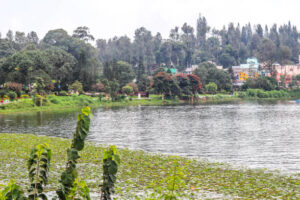
Lake, Lay’s Seat, Killiyur Falls, Pagoda Point, Arthur’s Seat, Kaveri Peak, and Servarayan Temple are all must-sees.
Kerala’s Ponmudi
Ponmudi is a prominent hill station in Kerala, located in the capital district of Thiruvananthapuram. Trekking trails abound, as do unusual flora and fauna such as mountain flowers, wild orchids, and exotic butterflies. Varayadumotta, one of the state’s longest and most difficult walking trails, is located in this hill station and spans 18 kilometres on one side. To journey through this place, which is only available for a few days a year, you must make a reservation in advance.
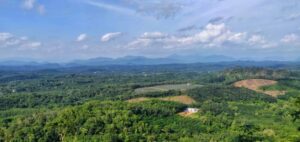
“Travellers, particularly those who enjoy bike trips, will adore Ponmudi. A Tripadvisor customer stated, “The roads are incredibly tiny and have 22 hairpin twists to reach the location.”
The Kallar River, Meenmutty Waterfalls, Tree House View Tower, and Varayadumotta are all must-see attractions.
Jammu and Kashmir’s Kokernag
The Kokernag Spring, which gushes from a misty hill surrounded by evergreen pine trees, is a sight to behold. A terraced garden and botanical garden are also located here, with exquisitely kept flower beds of many species, as well as colours covered and sheltered by wonderfully groomed evergreen bushes. It was created under Bakhshi Ghulam Mohammad’s reign.
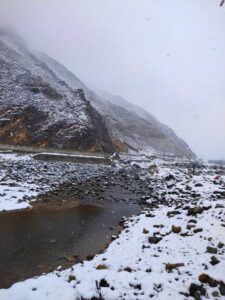
Kokernag Garden and Spring are two must-see attractions.
Arunachal Pradesh’s Mechuka
Mechuka is also known as the Forbidden Valley of Arunachal Pradesh, because it was only a decade ago that it became accessible by road. It is located at a height of 6,000 feet above sea level. The location is 29 kilometres from MacMahon, the international border between India and China. Another unique feature of the area is Mopin, an agricultural festival held by the state’s Galo tribe.
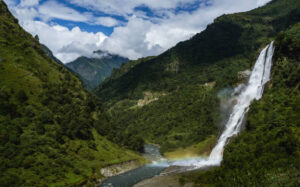
“The valley is just stunning.” In the natural environment, there are several options for trekking and strolling. During the Mopin Festival, we paid a visit. “Their culture and heritage are fascinating,” remarked one Tripadvisor user.
Mechuka Adventure Festival, Siang River, bamboo bridges, Old World Monastery, Mechuka Adventure Festival.
Andhra Pradesh’s Lambasingi
Lambasingi, often known as Andhra Pradesh’s Kashmir, is the only area in South India that receives snowfall throughout the winter. Towering hills, tall green trees, and deep forests abound in this lesser-known area. Lambasingi is an adventurer’s paradise, with several activities such as trekking, mountain biking, hiking, and camping.

Thajangi Reservoir, Kothapalli Waterfalls, and Susan Garden are all must-sees.
Himachal Pradesh’s Barot Valley
This low-key picnic place is ideal for a weekend retreat with friends or family. Trekking, trout fishing, and nature camping are all available. The average temperature in this area is around 16 degrees Celsius, making for a pleasant climate throughout the year. This Himachal hidden treasure was built for a hydropower project over the Uhl River and afterwards turned into a tourist attraction.

A Tripadvisor customer stated, “Peaceful, utterly clean, raw nature, dream-like environment with Uhl river flowing all along.”
Uhl River, Nargu Wildlife Sanctuary, Barot Temple, and Chuhar Valley are all must-sees.
Sikkim’s Yuksom
The’meeting site of three lamas’ is a historically significant location in Sikkim. This is because three Tibetan monks chose Phuntsog Namgyal as the first Monarch of Sikkim and bestowed upon him the title Chogyal, which means “religious king.” It also serves as the entrance to the Khangchendzonga Biosphere Reserve, which serves as the starting point for some of the most exciting treks in the high mountains. The location is great for learning about the state’s unique culture and traditions. There are numerous hiking trails and adventure activities can be found here.

Dubdi monastery and Khangchendzonga Biosphere Reserve are must-sees.
Maharashtra’s Mangi Tungi

This is a well-known holy pilgrimage site that is also recognised for its hills. It is a twin-pinnacle mountain with a plateau in between, and tourists must climb around 4,500 steps to reach the peak, which has several important historical and religious sites.Mangi Tungi Temple, Salher Fort, and the Ahimsa Statue are all must-sees.
Kerala’s Perumedu

Peerumedu is one of Kerala’s most prominent hill stations, known for its gorgeous views. The town gets its name from a Sufi saint named Peer Mohammad, who is supposed to have ties to Travancore’s royal line. The town is known for its uncommon flora and fauna, as well as huge expanses of coffee, tea, cardamom, rubber, and eucalyptus plantations.
Uttarakhand’s Raithal
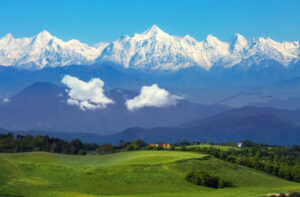
This charming settlement is well-known among hikers as the starting point for Dayara Bugyal, which is noted for its high alpine meadows. Raithal offers an exceptional trekking and village tourism experience, with significant features including traditional dwellings, culture, and a panoramic view of the Himalayas.
Panchpura, Someshwar Temple, the Incomplete Sun Temple, and Goat Village are all must-sees.





